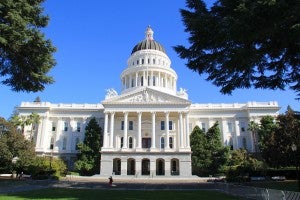 As the days are getting longer and the weather is warming up, kids across the country are counting down the days until summer vacation. California state lawmakers, on the other hand, are rolling up their sleeves and building upon California’s strong foundation of clean energy leadership and momentum. With the electricity sector responsible for about 20 percent of California’s total greenhouse gas emissions – the main culprit of climate change – the state still has work to do.
As the days are getting longer and the weather is warming up, kids across the country are counting down the days until summer vacation. California state lawmakers, on the other hand, are rolling up their sleeves and building upon California’s strong foundation of clean energy leadership and momentum. With the electricity sector responsible for about 20 percent of California’s total greenhouse gas emissions – the main culprit of climate change – the state still has work to do.
Last year, the California Legislature passed ambitious clean energy legislation. At the head of the pack, SB 350 (De León) raised the state’s renewable energy target to 50 percent by 2030 and required a doubling of savings gained from energy efficiency in the residential, commercial, and industrial sectors.
This year, the legislature is considering bills that could help California continue on the path to a clean energy future. It is up to our lawmakers to ensure these efforts make it past the finish line and onto the governor’s desk. Read More











 By:
By: 

 As rapid changes in energy technology – both in renewable and fossil fuel sources – transforms the way we power our lives, we have a chance to leave our children a prosperous world and reduce the effects of climate change. But, to scale fast enough, we need smart policies – at all levels of government.
As rapid changes in energy technology – both in renewable and fossil fuel sources – transforms the way we power our lives, we have a chance to leave our children a prosperous world and reduce the effects of climate change. But, to scale fast enough, we need smart policies – at all levels of government.